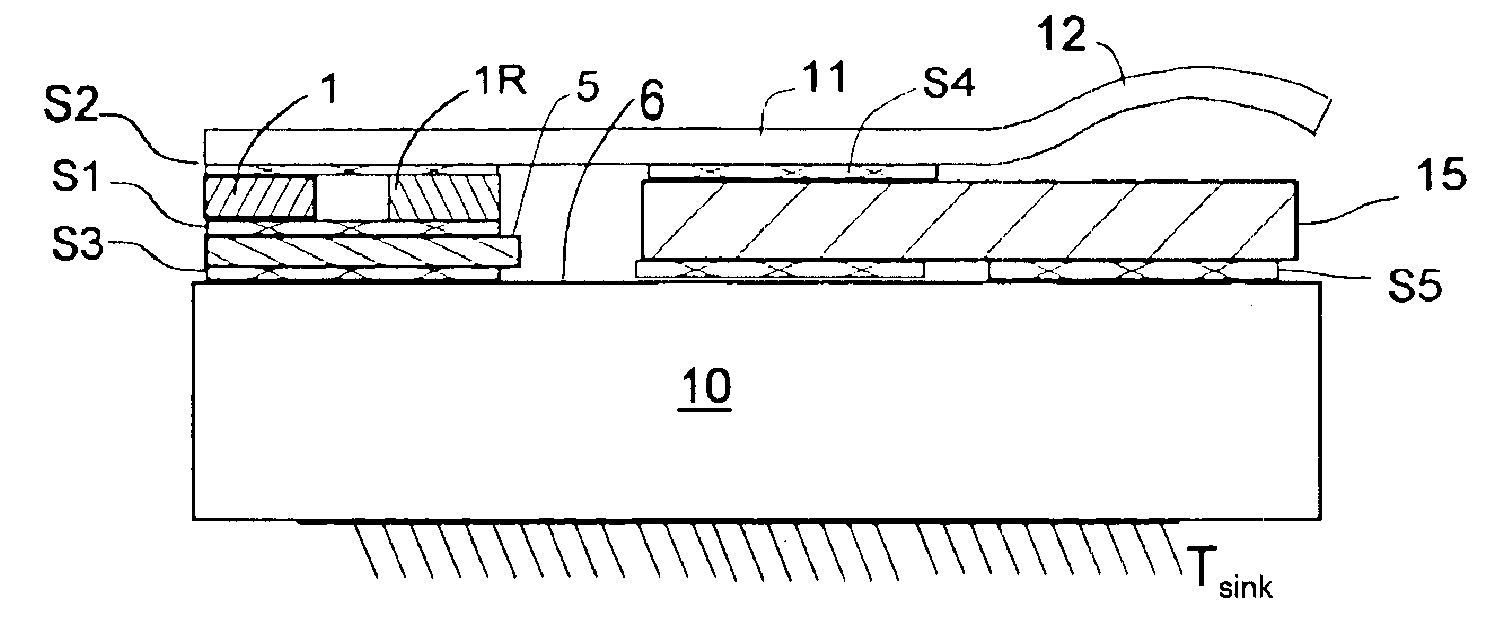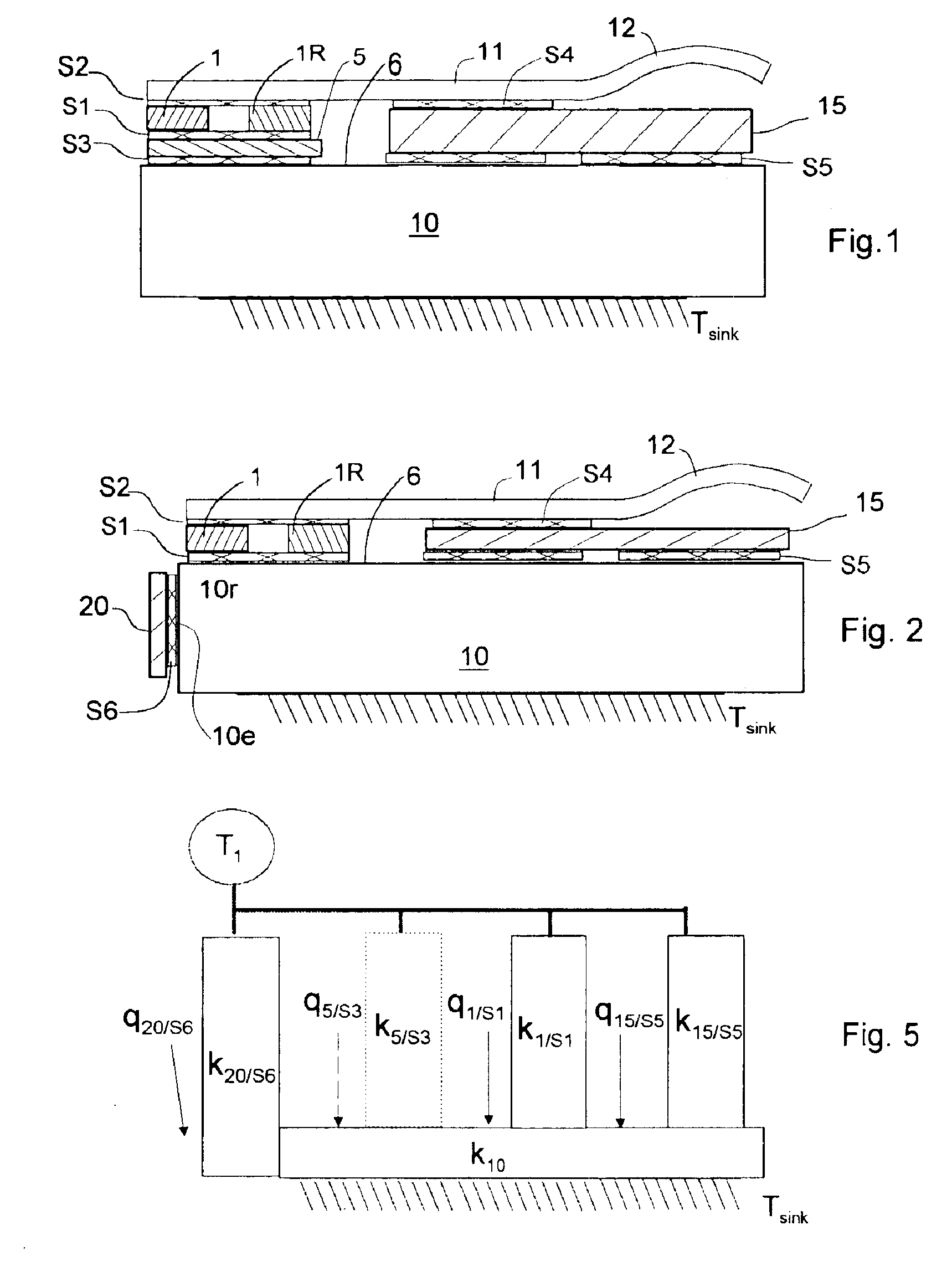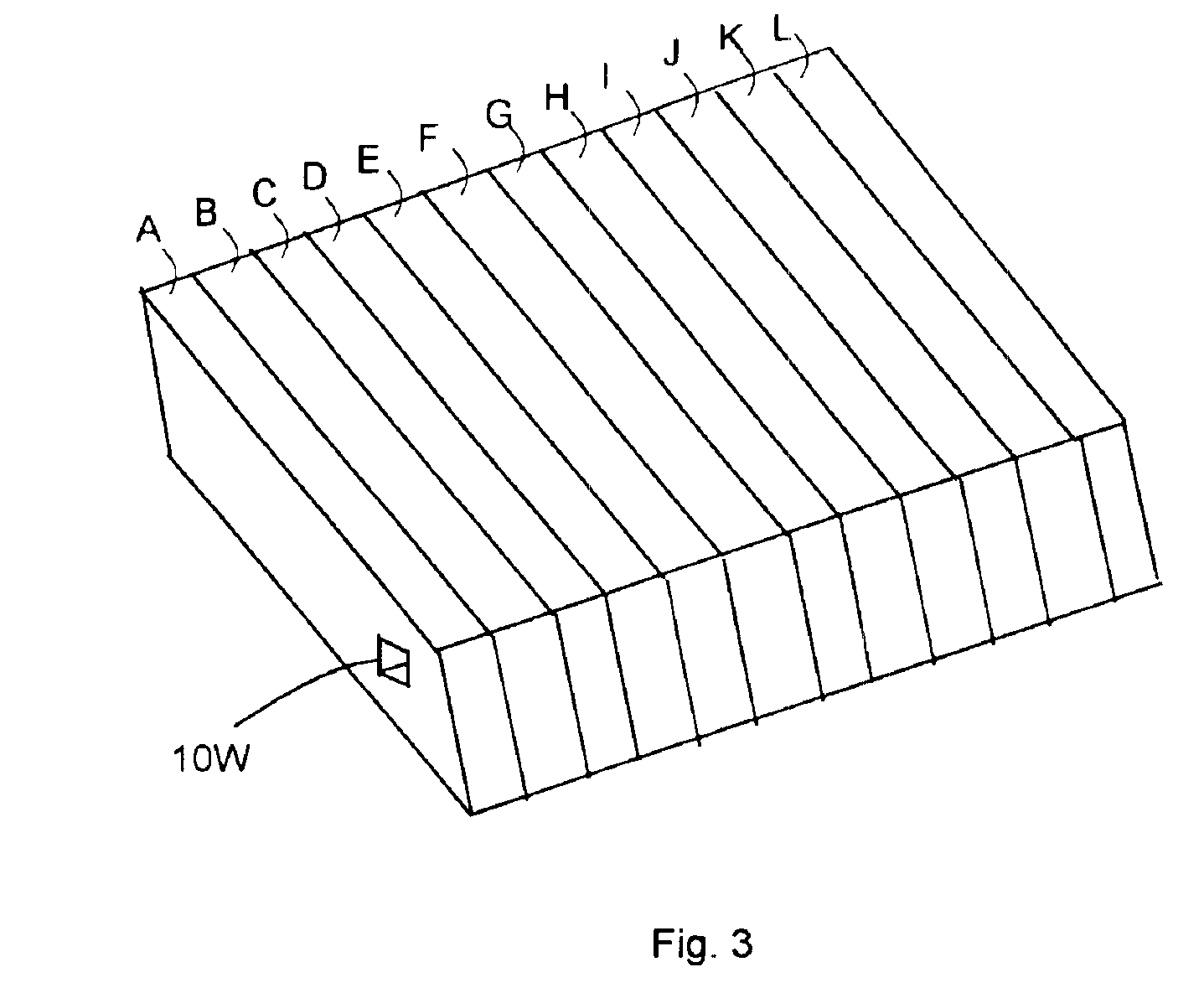CTE compensation of semiconductor laser bars
a laser bar and semiconductor technology, applied in semiconductor lasers, manufacturing tools, soldering apparatus, etc., can solve the problems of premature failure at high power output, shorten the useful life, and reduce the surface area available for heat transfer, so as to limit the useful life of laser bars
- Summary
- Abstract
- Description
- Claims
- Application Information
AI Technical Summary
Benefits of technology
Problems solved by technology
Method used
Image
Examples
Embodiment Construction
[0010]Referring to FIG. 1 the prior art method of mounting a laser bar 1 to a heat sink 10, such as that shown in U.S. Pat. No. 6,272,159, requires the use of a ceramic submount 5 whose CTE matches that of the laser bar. The use of a submount 5 requires two solder joints S1 and S3 in addition to the solder joint between laser bar 1 and spring contact 11. Each of the solder joints will have a thickness that depends on the type of solder used and the materials being joined. Illustratively, joint S1 between laser bar 1 and ceramic substrate 5 is a 25μ thick Au—Sn “preform” solder joint; joint S2 Between laser bar 1 and spring contact 11 is a 25μ thick InAg solder joint; joint S3 between ceramic substrate 5 and heat sink 10 is a 37μ thick In solder preform joint. A surge protecting reverse diode 1R, as described in U.S. Pat. No. 6,028,878 assigned to the assignee of the present invention, may also be soldered in tandem with laser bar 1. Electrical contact to laser diode bar 1 is provide...
PUM
| Property | Measurement | Unit |
|---|---|---|
| length | aaaaa | aaaaa |
| coefficients of thermal expansion | aaaaa | aaaaa |
| coefficient of thermal expansion | aaaaa | aaaaa |
Abstract
Description
Claims
Application Information
 Login to View More
Login to View More - R&D
- Intellectual Property
- Life Sciences
- Materials
- Tech Scout
- Unparalleled Data Quality
- Higher Quality Content
- 60% Fewer Hallucinations
Browse by: Latest US Patents, China's latest patents, Technical Efficacy Thesaurus, Application Domain, Technology Topic, Popular Technical Reports.
© 2025 PatSnap. All rights reserved.Legal|Privacy policy|Modern Slavery Act Transparency Statement|Sitemap|About US| Contact US: help@patsnap.com



